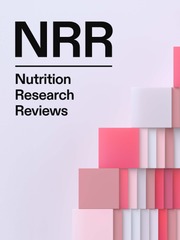No CrossRef data available.
Article contents
Exploiting the vulnerability of SARS-CoV-2 with a partnership of mucosal immune function and nutrition: a narrative review
Published online by Cambridge University Press: 21 May 2025
Abstract
To achieve infectivity, severe acute respiratory syndrome coronavirus 2 (SARS-CoV-2), the virus responsible for COVID-19, must first traverse the upper respiratory tract mucosal barrier. Once infection is established, the cascading complexities of the pathophysiology of COVID-19 makes intervention extremely difficult. Thus, enhancing the defensive properties of the mucosal linings of the upper respiratory tract may reduce infection by SARS-CoV-2 and indeed by other viruses such as influenza, which have been responsible for the two major pandemics of the last century. In this review we summarise potential opportunities for foods and nutrients to promote an adequate mucosal immune preparedness with an aim to assist protection against infection by SARS-CoV-2, to maximise the mucosal vaccination (IgA inducing) response to existing systemic vaccines, and to play a role as adjuvants to intranasal vaccines. We identify opportunities for vitamins A and D, zinc, probiotics, bovine colostrum and resistant starch to promote mucosal immunity and enhance the mucosal response to systemic vaccines, and for vitamin A to also improve the mucosal response to intranasal vaccination. It is possible that an entirely different virus may in the future, by way of convergent evolution, utilise a similar upper respiratory tract infection pathway. A greater research focus on mucosal lymphoid immune protection in partnership with nutrition would result in greater preparedness for such an event.
Information
- Type
- Review Article
- Information
- Copyright
- © The Author(s), 2025. Published by Cambridge University Press on behalf of The Nutrition Society


